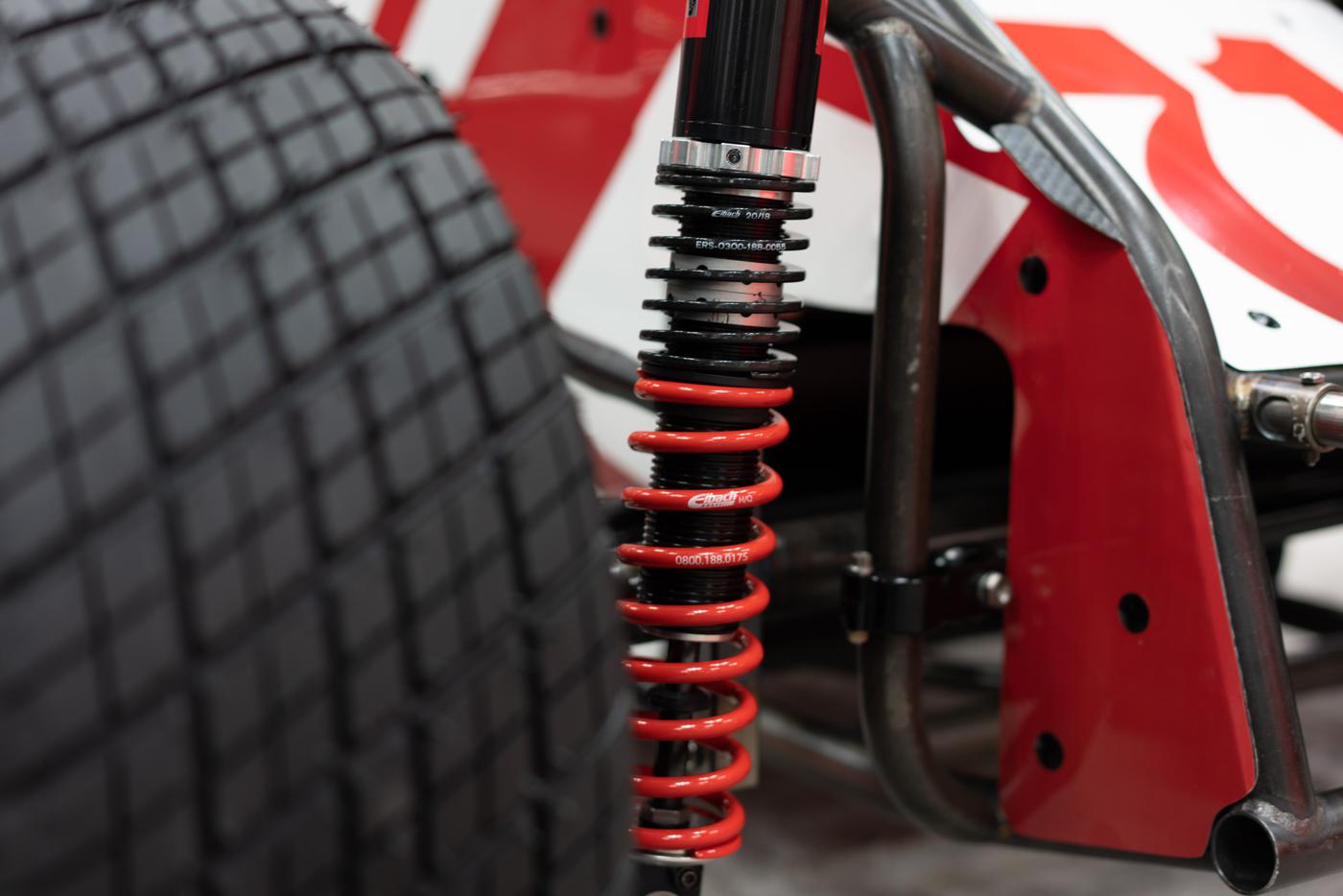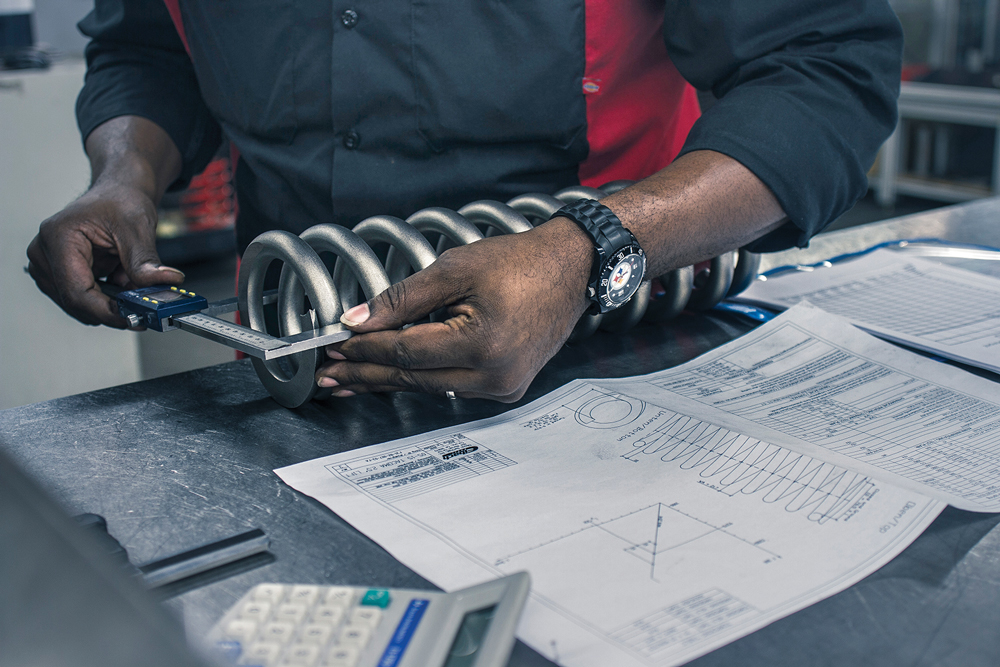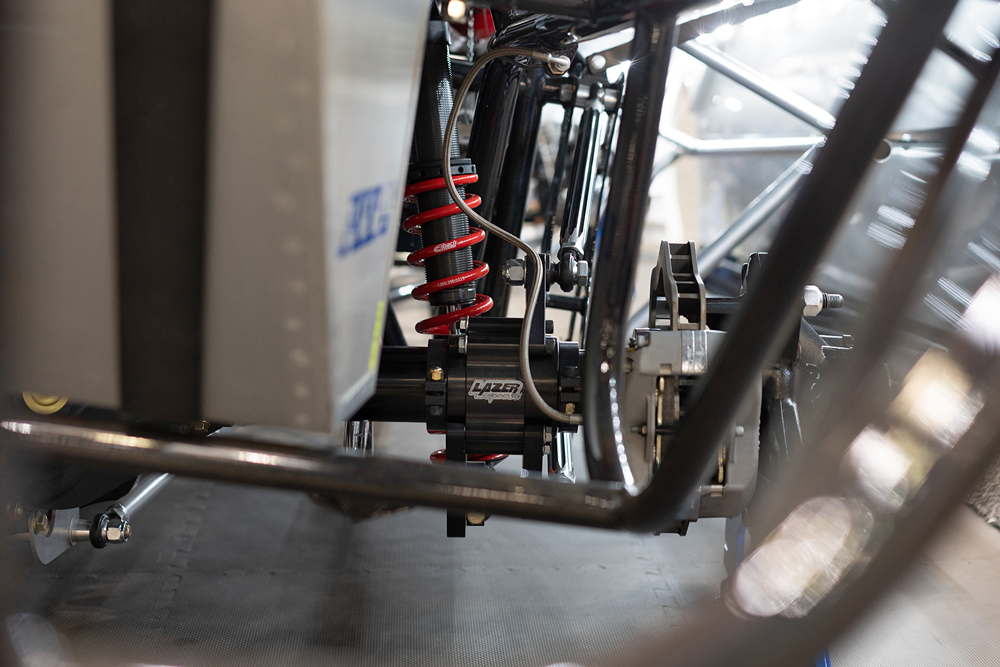PRI Tech: Race Car Setup Strategies

This is a tender/main stacked-spring setup, with the tender spring above the main spring. This allows for tuning combinations throughout a night of racing, or slight changes from track to track. The dual rate provides a slightly lighter combined rate, while storing the energy of the compressed spring helps the vehicle transfer weight and build grip.
Developing an understanding of the various setup components and how they interact is crucial to determining the perfect balance.
Race car setup might seem like a straightforward task, but in reality, it’s an intricate process that requires a deep understanding of how various components work together to make the car perform at its best. We here at Eibach, Inc. often get calls from racers asking for “setup advice” to improve their performance without any other info given. The truth is, it’s not that simple.
Top-tier racing teams, like those in Formula 1 and NASCAR, employ teams of experts, including engineers, wind tunnel specialists, and simulator technicians to fine-tune their race car setups. They spend countless hours testing different combinations of springs, shocks, component angles, tire pressures, aero loads, and more to find the winning formula. It’s a science, and it takes a lot of work to get it right.
Why do some racers or car owners think it’s as easy to find the perfect setup for their cars as calling the local dealer who knows nothing about their team, cars, or drivers and asking for help? Or they might see someone dominating locally and assume that copying their setup will guarantee success. But racing is not a one-size-fits-all kind of sport. Each car, track, and driver combination is unique, and what works for one may not work for another. You see it regularly in NASCAR these days since the cars are nearly identical, yet the same teams aren’t always finishing together.
Tools Not In Your Toolbox
What exactly should racers be looking at when it comes to their car setup? There are numerous components that contribute to a winning setup. Choosing the right chassis; springs rates, lengths, and loads; shock valving; drive angles; wheel loads; weight transfer tools; aero tools, and more all play a role in how the car handles on the track. Understanding how each of these components works and how they interact with other parts is crucial to finding the perfect balance.

How do you learn about all of this? Trade shows like the PRI Show are a great place to meet people and learn. You have all the smartest people in the industry under one roof, so spend some time with them and pick their brains. Once you do that, take a minute and write down some notes. Three straight days of talking with people is hard to retain in your brain, trust me.
The Internet is also a powerful tool and probably should be your go-to most of the time. There are tons of online classes and seminars available at your fingertips without leaving the shop.
Manufacturers also regularly have seminars on their products in person as well. Any time you can be in the same place with other like-minded people you are guaranteed to learn a thing or two.
Another crucial aspect to the puzzle is data collection. Data is essential in today’s racing world and turns “feelings” into “facts.” It allows teams to visually analyze valuable information like travel measurements, spring and shock loads, geometry of suspension components, and dynamic aero positions. Surprisingly, some racers are hesitant to use data collection tools. Perhaps it’s seen as cheating or going against the spirit of grassroots racing, but in fact, this is already happening with the majority of the front-running teams. Travel indicators, wheel-load devices, temperature gauges, or even cameras are great ways to gather this info. You can also do the same with driver input to see throttle, brake, and steering positions, and really see how one is affecting the other. Please check with your sanctioning body first to see when and where you can use them.

Testing is another critical element of race car setup. On race day, there’s very little time to try new things. That’s why the saying, “Races are won in the shop” holds true. Successful teams spend as much time testing and fine-tuning their setups off the track as they do racing on it. Spring and shock dynos among other things are a must to be successful these days. Teams that have them spend hours upon hours trying different combinations looking for that edge. Those who don’t have them end up calling us and asking what the teams that do have them are doing.
Also, you need to have a plan of what you want to test once you get to the track. Don’t just show up and think you’re going to turn laps and see what happens—you do that already on race day. Again, remember to think like a professional, be prepared, and take notes like a professional.
In the end, the driver’s comfort and confidence behind the wheel are what truly matter. It’s not just about having the most expensive components or the latest gadgets. It’s about understanding how each one of these parts affects the other one and being able to make decisions based on “facts” not “feelings.” Ultimately a setup that makes the driver feel at ease and in control will lead to better performance on the track.
David Cardey has been the National Sales Manager at Eibach for 12 years. Cardey has also competed in various racing series including USAC CRA, NASCAR West, and Skip Barber. Eibach specializes in high-quality aftermarket performance and suspension products and is best known for its springs on and off the track.
 MEMBERSHIP LOGIN
MEMBERSHIP LOGIN JOIN PRI
JOIN PRI


